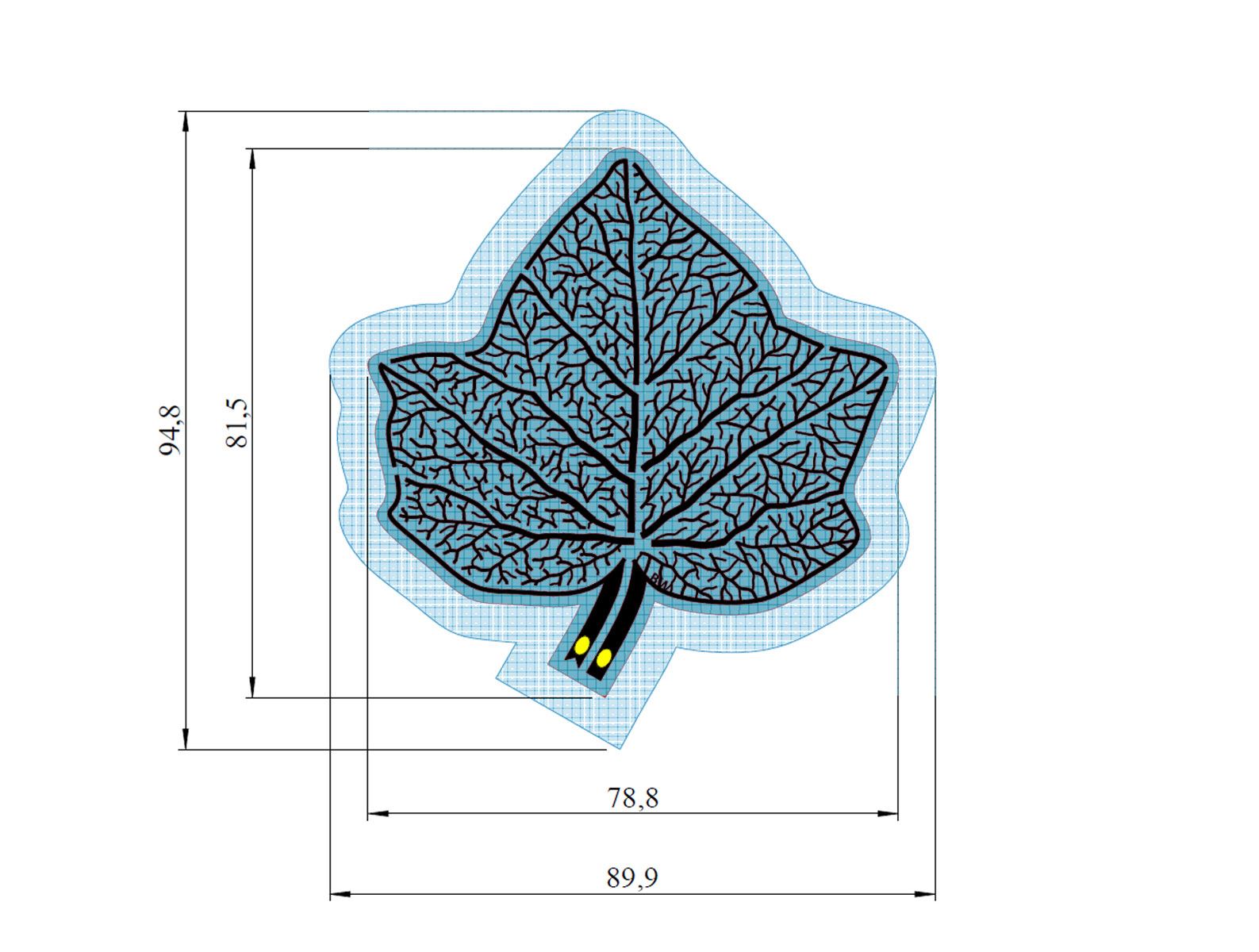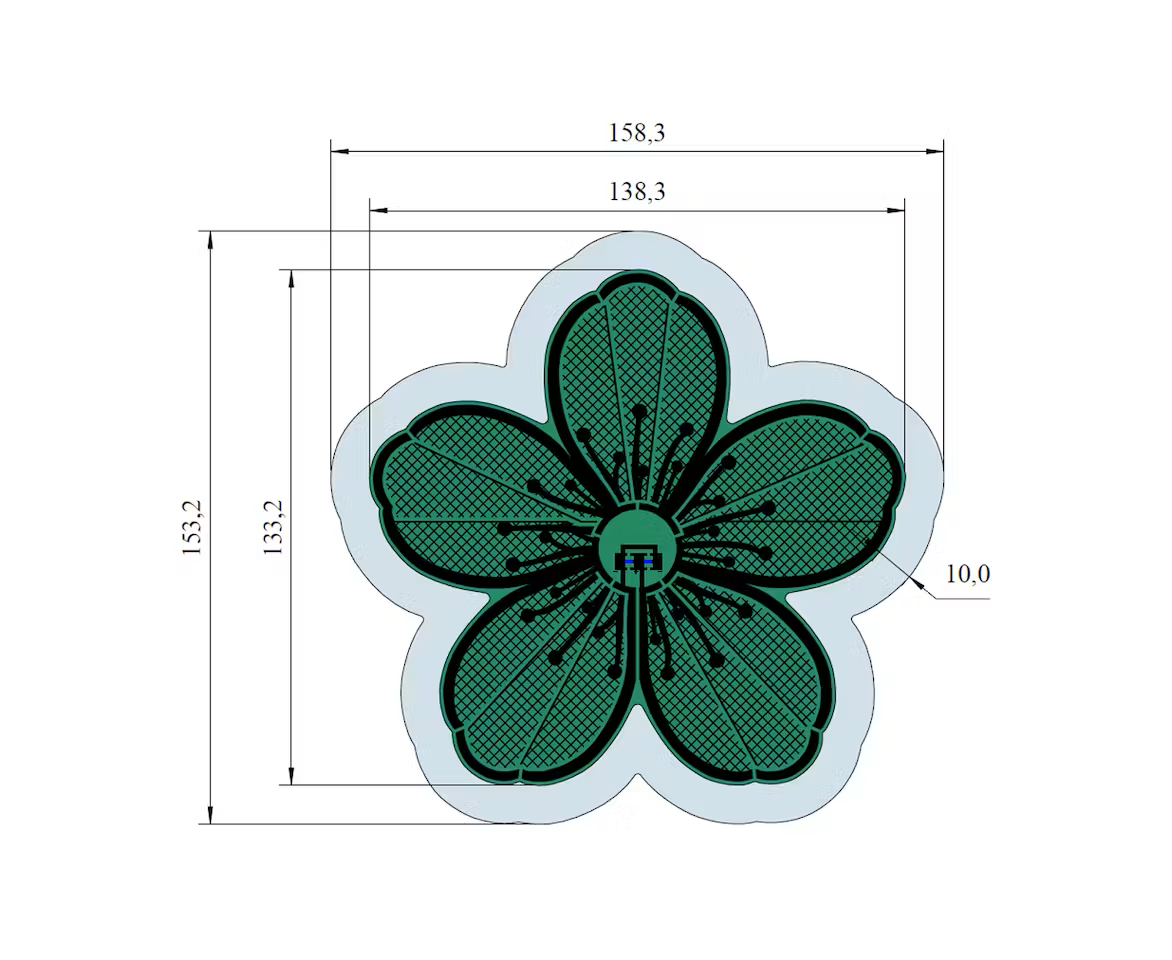This is the world's first clothing with organic solar cells incorporated into it that is available as a product. It is made by my tech-fashion brand, Art by Physicist, and solar energy company, ASCA.
You may have noticed that the solar films are unlike any other solar panels you may be used to seeing - instead of regular rectangular shapes, the solar films here can be in any irregular shapes, including beautiful flowers and leaves, with printed irregular silver traces for electricity conduction which are both functional and decorative. The solar films are semi-transparent that sparks your imagination.
The solar films can be laminated on all kinds of materials, surfaces and fabrics. They are flexible and wearable, making them an integral part of designer pieces.
In this project, we'll demonstrate how you can design your own clothes with solar films embedded, customized to the shapes you like. Participate in the Tech Fashion Design Challenge Hackster Contest to win a chance to have ASCA make your very own solar-films.
Option 1: Design your own custom solar modulesIf you want to have custom solar film shapes made for your specific applications, you can submit a drawing of the shapes you want. You have complete freedom to choose the way to demonstrate your ideas. Just make sure to follow these steps:
- 1. Indicate in your Hackster project the "custom shape" option in the list of hardware components, like how I have done for this project.
- 2. Upload drawings of your module designs to the Schematics. Maximum dimension is 150mm*250mm and at least 50mm*50mm. You are allowed to have one custom module shape per final design. The maximum number of modules you can use is 10.
- 3. Print them out on paper or use other visual ways to make mockups of your designs. For example, like how I show my ideas in my photos/videos below.
- 4. Indicate the power output of the modules you need, communicating what you are going to use the solar films to charge. ASCA will evaluate if it is possible. Otherwise, we will assume 5V by default.
Feel free to start with sketches. For me, sketches are not usually in my workflow. I like to design the patterns of the clothes directly digitally. Here, I'm using Browzwear's VStitcher software to create the patterns. In fact, a customer requested a custom solar black crop top. I created the virtual avatar for the patterns to drape on with their measurements so the patterns are actually fitted to their body. You don't have to do any of these. It's just me demonstrating my work process. If you can document your work process clearly, that'll make a good project.
Then I cut the fabrics according to the digital patterns to make a physical prototype. It's a blazer inspired crop top, which has an extra removable piece in the front for the solar films. They align nicely with the collar of the blazer. It looks like this because my customer has specific preference on the style and they always wear a backpack. Therefore I cannot put the solar modules on the back of the crop top.
In the video, I show my iterations trying different existing solar panels, including the flexible ones by Jiang Solar, which is also very nice and will be used in other projects, but I eventually decided to create my custom shapes to fit the crop top.
The charging cable and the thing you are charging are hidden behind the front piece in a pocket, like demonstrated in the video. After removing the front piece, the top can be thrown into the washing machine. These are considerations for manufacturing and user experience. People always asked me how to wash wearable-electronic embedded clothing. I answer them in Art by Physicist's Tech-Fashion FAQs. In the Hackster contest, we will be voting for a "Most Manufacturable Design". Consider your design's practicality, as well as functionality and aesthetics.
I used some extra TPU from my other project to illustrate the solar film mockups. You can choose to use any materials to represent the solar films, as long as your communication is clear. You can just use paper, if it is the easiest for you.
ASCA will be making one module shape per design. I noticed that after making the mockups, I need to get rid off the smaller piece. So actually I'll only make the big piece so ASCA will make it accordingly. Make sure you stick to the sizing requirements in step 2 above and one module shape per design. You can have multiple modules but they need to be in the same shape.
Now submit your ideas by writing a Hackster project, entering the contest. If you win the contest, ASCA and Art by Physicist will help you turn your ideas into actual products and go to market.
Option 2: Choose from existing solar modules and design your own applications.ASCA has made three solar module designs for you to choose from, if you do not want to design your own shape from scratch. If you choose this option, in your Hackster project:
- 1. Indicate which of the solar films below (Leaf or Flower) and how many of them you'd like to use. You can add them in the list of hardware components, like how I have done for this project. The maximum number of modules you can use is 10.
- 2. Even better, you can download the drawings of these modules from the Schematics, print them out on paper and make mockups of your designs. For example, like how I show my ideas in my photos/videos below.
- 3. Indicate the power output of the modules you need, communicating what you are going to use the solar films to charge. ASCA will evaluate if it is possible. Otherwise, we will assume 5V by default.
In my project, for example, I chose to use two lotus films, which were already available at ASCA. We are not offering the lotus shape for this contest. The below is just for demonstration purpose.
I showed ASCA where I want to put them on the dress by printing out paper mockups, like so:
Then we were able to produce the clothing as we envisioned. Very easy.
All you need to do is choosing a film, writing up your idea as a Hackster project, using paper mockups to communicate your idea, entering the contest. ASCA and Art by Physicist will help you turn your ideas into actual products, if you win the contest, and go to market!
Here are additional inspirations by other creators to show you all kinds of applications that are possible. So don't limit your imagination!
Art and FashionJoin the movement to promote sustainable wearable tech and clean energy. Spread the word with us and get your ideas turned into reality.
















Comments
Please log in or sign up to comment.